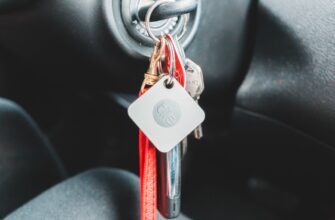- How to Recover Your Private Key Safely: Protect Your Digital Assets
- Understanding Your Private Key: The Master Key to Your Crypto
- Prevention is the Best Medicine: Secure Your Key *Before* Disaster Strikes
- How to Recover Your Private Key Safely: Potential Methods
- Step-by-Step Guide: How to Recover Your Private Key Safely Using a Seed Phrase
- FAQ: Safely Recovering Your Private Key
- Conclusion: Safety First in Private Key Recovery
How to Recover Your Private Key Safely: Protect Your Digital Assets
Losing access to your cryptocurrency wallet due to a misplaced or corrupted private key can feel like a nightmare. Your private key is the ultimate proof of ownership for your digital assets – lose it permanently, and those assets are likely gone forever. However, all hope isn’t lost if you act carefully and safely. This comprehensive guide explains how to recover your private key safely, minimizing risks while maximizing your chances of regaining access to your funds. We’ll cover prevention, potential recovery methods, crucial safety precautions, and essential steps to take.
Understanding Your Private Key: The Master Key to Your Crypto
A private key is a unique, complex string of letters and numbers (often represented as a long string or QR code) that mathematically proves ownership of cryptocurrency funds stored on a blockchain. Think of it as the ultimate password:
- Absolute Control: Whoever possesses the private key controls the associated cryptocurrency. No bank or intermediary can override this.
- Irreversible Loss: If your private key is lost with no backup and no recovery method, the funds are permanently inaccessible.
- Security is Paramount: Exposing your private key to anyone or any unsecured device risks immediate theft of your assets.
Recovery isn’t about ‘finding’ the key like a lost physical object; it’s about leveraging pre-established secure methods to regenerate or restore access using information you hopefully safeguarded in advance.
Prevention is the Best Medicine: Secure Your Key *Before* Disaster Strikes
The safest way to ‘recover’ a private key is to never need recovery in the first place. Implement these practices immediately:
- Backup Your Seed Phrase Religiously: Most modern wallets (like hardware and reputable software wallets) generate a 12, 18, or 24-word seed phrase (recovery phrase/mnemonic). This is the human-readable representation of your private key(s). Write it down by hand on durable material (cryptosteel, titanium, or high-quality paper stored securely). Never store it digitally (no photos, cloud storage, text files, emails). Create multiple copies stored in separate, secure physical locations (e.g., safe deposit box, home safe, trusted relative).
- Use Reputable Hardware Wallets: Devices like Ledger or Trezor store private keys offline, immune to online hacks. They rely on your seed phrase for recovery.
- Password Managers (Use with Extreme Caution): While generally discouraged for seed phrases, a highly secure, offline password manager *might* be considered for encrypted storage of non-critical wallet info (NOT the seed phrase itself). Never rely solely on this.
- Test Your Recovery: After setting up a new wallet and backing up the seed phrase, safely wipe the wallet (or use a dummy wallet) and practice restoring it using ONLY the seed phrase. This verifies your backup works.
How to Recover Your Private Key Safely: Potential Methods
If you’ve lost access and need to recover, here are methods, ranked by safety and likelihood of success:
- Using Your Seed Phrase (Safest & Most Reliable):
- This is the primary and intended recovery method for most wallets.
- Obtain a new instance of the same wallet software (or compatible wallet).
- Select the “Restore Wallet” or “Import using Recovery Phrase” option.
- Carefully enter your seed phrase words in the exact order, double-checking spelling. Do this on a clean, malware-free device.
- If successful, your wallet will regenerate the private keys and restore access.
- Restoring from a Secure Backup File (Software Wallets):
- Some software wallets (e.g., Electrum) allow creating encrypted backup files (often `.dat` or `.wallet` files).
- If you have this file AND remember the strong password used to encrypt it, you can restore the wallet by importing the file.
- Critical: This file contains your private keys! Treat it with the same security as a seed phrase. Only restore on a clean, secure device.
- Professional Data Recovery (High Risk, Last Resort):
- If your private key/seed phrase was stored on a damaged storage device (hard drive, USB stick, phone), professional data recovery services might be able to retrieve it.
- Extreme Caution Required: Only use highly reputable, established firms with proven expertise in crypto data recovery. Research thoroughly and understand the risks (cost, potential failure, security exposure). Never send the physical device to an unknown entity.
- This is expensive and uncertain. Prevention is vastly superior.
Warning: Avoid These Dangerous “Recovery” Methods
- Online Key Generators/Recovery Tools: Websites or software claiming to “find” or “recover” lost keys are almost always scams designed to steal your remaining funds or seed phrase.
- “Recovery Services” Contacting You: Legitimate services don’t cold-call or DM you. Anyone offering recovery out of the blue is a scammer.
- Sharing Your Seed Phrase or Private Key: Never, ever share this with anyone claiming to help you recover. They will steal your funds.
Step-by-Step Guide: How to Recover Your Private Key Safely Using a Seed Phrase
- Gather Your Secure Seed Phrase: Retrieve your physically written seed phrase from its secure location.
- Prepare a Clean, Secure Environment: Use a computer or mobile device known to be free of malware. Ideally, use a device dedicated to crypto or freshly formatted. Ensure strong, updated antivirus.
- Download Official Wallet Software: Only download the wallet software directly from the official website (double-check the URL!). Avoid third-party app stores or links.
- Install and Choose “Restore Wallet”: Install the software. Launch it and select the option to restore/recover a wallet using a seed phrase.
- Enter Seed Phrase Meticulously: Carefully type each word of your seed phrase in the exact order, one by one. Verify spelling multiple times. Most wallets will ask you to confirm specific words from the list.
- Set a Strong New Password (if applicable): When prompted, create a new, very strong password for the wallet file/interface. Use a password manager.
- Verify Access: Once restored, carefully check a small portion of your transaction history or balance to confirm access is restored. Do not immediately move large sums.
- Re-Secure Your Assets: Once confirmed:
- Consider moving funds to a brand new wallet with a newly generated seed phrase (especially if you suspect any compromise during the recovery process).
- Create fresh, secure backups of the new seed phrase immediately.
FAQ: Safely Recovering Your Private Key
Q1: I lost my private key and didn’t back up my seed phrase. Can I recover my crypto?
A: Unfortunately, the chances are extremely low, bordering on impossible. Private keys are designed to be irrecoverable without the seed phrase or a secure backup. This highlights the absolute criticality of backing up your seed phrase securely from day one.
Q2: Is it safe to use online tools to recover a lost private key?
A: No, it is extremely dangerous. Any website or software claiming to recover lost private keys is almost certainly a scam. They exist solely to steal your remaining funds or trick you into entering your seed phrase, which they will then use to drain your wallet. Avoid them completely.
Q3: Can my wallet provider (like Coinbase, Binance, Exodus) recover my private key?
A: It depends:
- Custodial Wallets (Exchanges like Coinbase, Binance): Yes, they control the private keys. You recover access through their account recovery process (email, 2FA, KYC), not by recovering the key itself.
- Non-Custodial Wallets (Exodus, MetaMask, Hardware Wallets): No. These wallets emphasize user sovereignty. They do not store your private key or seed phrase. Recovery is solely your responsibility via your seed phrase backup. They cannot help you recover a lost key.
Q4: What should I do if I think my private key or seed phrase might be compromised?
A: Act immediately:
- Do Not Panic: But act swiftly.
- Move Funds: If you still have access, transfer all funds to a brand new wallet with a newly generated seed phrase immediately. Use a clean, secure device.
- Never Reuse: Never use the old seed phrase or compromised wallet again.
- Secure New Backup: Securely back up the new seed phrase following best practices.
Q5: Are hardware wallets worth it for key security?
A: Absolutely. Hardware wallets are the gold standard for securing private keys. They keep keys offline (“cold storage”), immune to online hacking attempts. They force you to physically confirm transactions, adding a critical layer of security. The cost is minimal compared to the security they provide for valuable crypto assets. Recovery is still via your seed phrase.
Conclusion: Safety First in Private Key Recovery
Recovering a private key is a high-stakes process. The only reliably safe method is using your securely backed-up seed phrase on a clean device with official wallet software. All other methods carry significant risks of failure or, worse, theft. Prioritize prevention through robust seed phrase backup practices and hardware wallets. If recovery is necessary, proceed with extreme caution, double-check every step, and be hyper-vigilant against scams. By understanding how to recover your private key safely, you protect your digital wealth from irreversible loss. Remember: Your private key’s security is ultimately in your hands.








